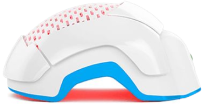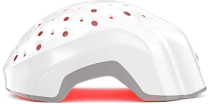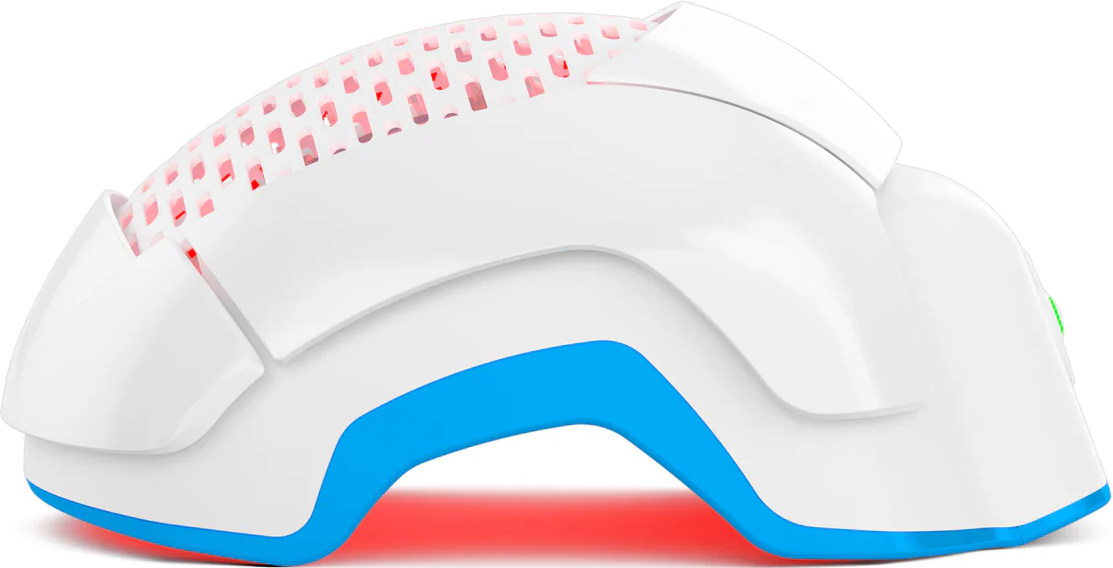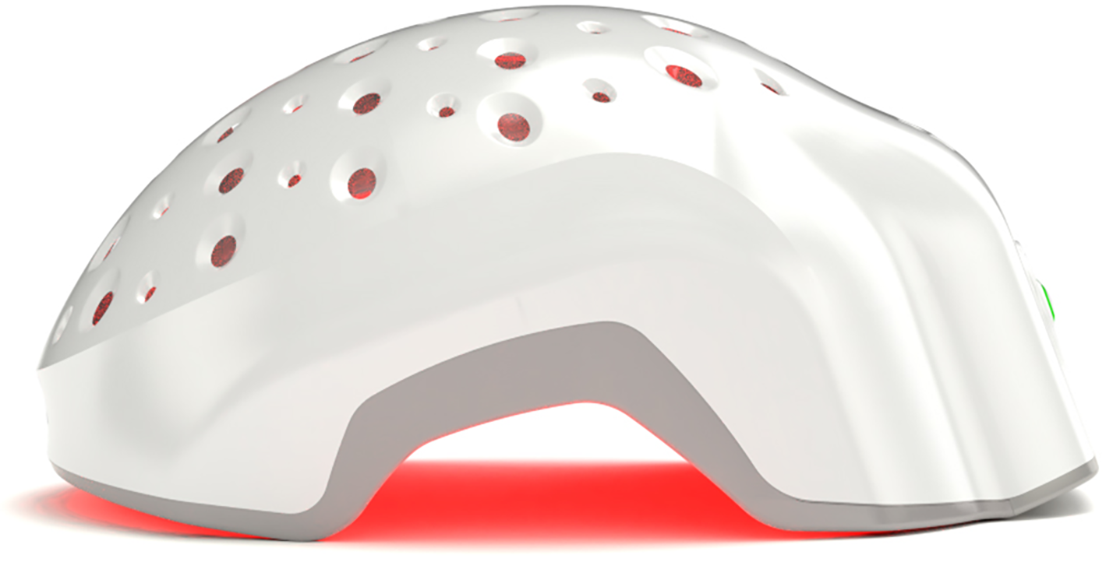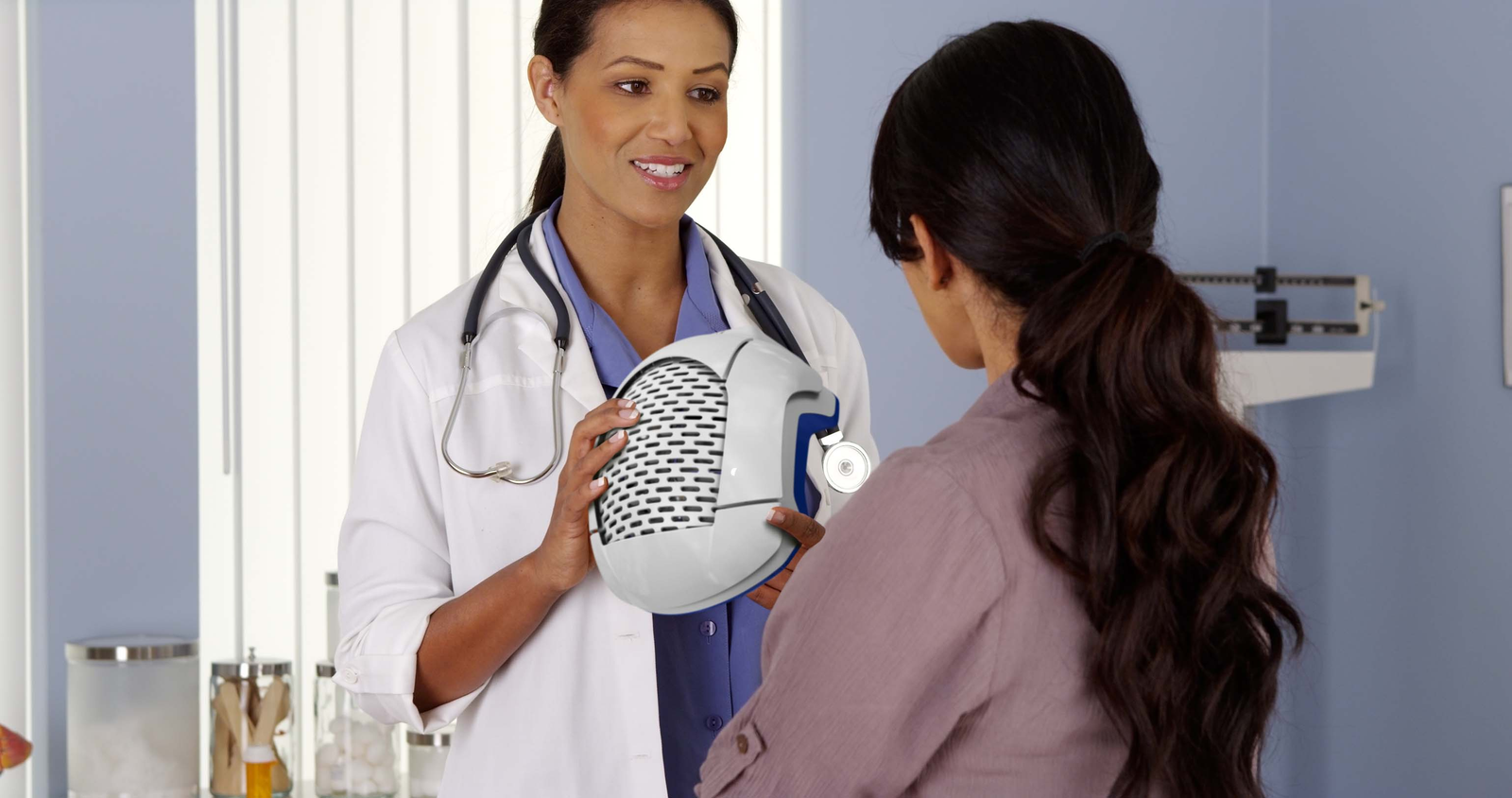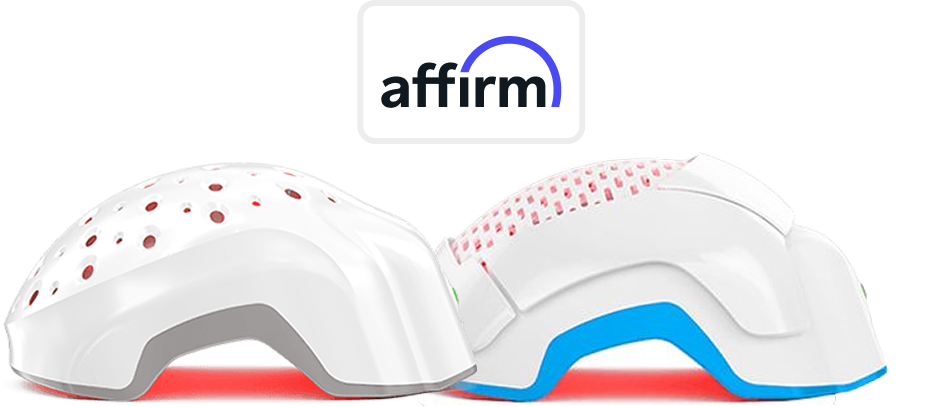If you’re losing hair, you’re probably wondering why. Doing research is frustrating and might be confusing with lots of medical terms thrown around you. You might have started to link the presence of something called “DHT” with hair loss. So, What is DHT? Should you consider DHT when researching your options for treating hair loss? And does laser hair therapy lower DHT levels? In short, the answer is no.
So, how exactly does DHT cause hair loss? It's all about the effects it has on the hair follicles. While DHT is not the sole cause of hair loss, it is a significant factor in the development of pattern baldness, the most common type of hair loss in both men and women.
What is DHT (Dihydrotestosterone)?
DHT is a hormone present in both men and women. Its full name is 5α-dihydrotestosterone. Think of DHT as hair follicle assassins. When your scalp becomes inflamed, DHT rallies up its troops and launches its attack.
Disease and hair loss are closely tied together. If you are ill, your body redirects all of its energy towards ensuring you survive. Your hair is no longer deemed necessary. In the presence of disease, the DHT Mobsters get released into scalp areas like a swarm of locusts to rampage and cause destruction.
The DHT Mobsters don’t need a medical condition to justify their presence. They’ll sneak in however they can– even if it means infiltrating your genes. You could be perfectly healthy and still be suffering from hereditary hair loss. Seeing your relatives struggle with thinning hair could indicate that the same fate awaits you. This is why you should take preventative measures as early as you can.
The DHT Mobsters never show mercy: they pour out in vast numbers and stop nutrients from accessing hair cells. Without nutrients, hair cells can’t provide energy to hair follicles. This results in hair miniaturization and hair loss.
What Does DHT Do to Your Body?
DHT is derived from testosterone and is responsible for various physical changes during puberty, including the growth of facial hair, deepening of the voice, and development of the male reproductive system. However, excessive levels of DHT can lead to certain health concerns. DHT is associated with hair loss, particularly in individuals genetically predisposed to male pattern baldness. It can attach to hair follicles and cause them to shrink over time. This shrinking process, known as miniaturization, leads to thinner and weaker hair strands.
DHT can also contribute to the enlargement of the prostate gland, which may cause urinary problems in some men. Additionally, elevated DHT levels have been linked to acne and oily skin.
DHT Vs Testosterone
DHT and Testosterone are both androgens, but they have different roles and effects in the body. Testosterone is primary male sex hormone, with a broad range of functions including muscle growth, bone density, and male secondary sexual characteristics. On the other hand, DHT is a more potent androgen and is mainly responsible for male pattern hair loss, the growth of facial and body hair, and the development and maintenance of the prostate gland.
Testosterone is primarily produced in the testes in males and in smaller amounts in the adrenal glands. In females, the ovaries produce testosterone to a lesser extent. DHT is a derivative of testosterone into DHT in specific tissues like the prostate, skin, and hair follicles.
How Does DHT Cause Hair Loss?
DHT is more potent than testosterone and can bind to receptors in hair follicles, particularly in the scalp, and cause gradual thinning of the hair and a decrease in the growth cycle. Here's how DHT causes hair loss:
- DHT can cause the hair follicles in the scalp to shrink or miniaturize. This shortens the growth phase of the hair and results in shorter and finer hairs.
- DHT can prolong the resting phase (telogen phase), causing delay in the growth of new hair and contributing to hair thinning.
- DHT can also inhibit the growth of new hair by reducing the hair follicles' ability to produce strong and healthy hair strands.
- People who are susceptible to androgenetic alopecia have hair follicles that are more sensitive to the effects of DHT. It is often inherited from one or both parents.
- Androgenic alopecia typically follows a pattern starting with a receding hairline and thinning at the crown. This pattern is associated with the distribution of androgen receptor-rich hair follicles in the scalp.
Symptoms of High DHT
High levels of DHT can lead to various symptoms and health-related issues-particularly in males, due to its association with male pattern hair loss and prostate-related problems. Here are some symptoms of high DHT:
Male Pattern Baldness (Androgenic Alopecia): High DHT causes thinning of hair on the scalp, usually starting at the temples or crown of the head.
Acne and Oily Skin: Elevated levels of DHT can stimulate sebaceous glands, leading to increased oil production on the skin, which may contribute to acne and oily skin.
Hirsutism: High DHT can cause excessive growth of body or facial hair in male patterns (such as on the face, chest, back, or abdomen) in women.
Enlarged Prostate: High DHT can cause an enlarged prostate, which results in frequent or urgent need to urinate, weak or interrupted urine stream, and inability to completely empty the bladder.
Negative Impact on Cardiovascular Health: There is some research that indicates that high DHT levels may be associated with an increasing risk of cardiovascular issues, although this is still under investigation.
How to Prevent and Reduce DHT?
Reducing DHT levels can be beneficial for individuals dealing with excess DHT, such as male-pattern baldness (androgenic alopecia) or other issues. Here are some strategies to lower DHT levels:
Dietary Changes: Reduce consumption of high saturated and trans fat and include sources of omega-3 acids from fatty fish, flaxseeds, chia seeds, and walnuts in your diet, which help modulate and balance hormone levels.
Exercise and Physical Activity: Regular exercise can also help in maintaining healthy hormone levels, including DHT. Also, aim for a balanced exercise routine that includes both cardiovascular and strength training exercises.
Stress Reduction: Chronic stress can elevate cortisol levels, which affect hormone balance, including DHT levels. Practice stress reduction techniques such as mindfulness, meditation, yoga, or deep breathing exercises.
Lifestyle Changes: Get an adequate amount of sleep, which is crucial for hormone regulation and overall health.
DHT Blockers: DHT blockers prevent DHT from binding to 5-AR receptors which includes the hair follicles that can allow DHT to shrink follicles. Some are: Pygeum bark, Pumpkin seed oil, etc.
Side Effects of DHT Blockers

DHT blockers are medications or treatments designed to lower DHT levels in the body. DHT blockers work by stopping the enzyme called 5-alpha reductase from converting testosterone into DHT. By reducing DHT levels, these blockers can help slow down or prevent hair loss by keeping the hair follicles healthy. However, it's important to note that DHT blockers may have side effects when used to lower DHT levels. Here are some known side effects:
- They can affect sexual function, leading to issues like reduced libido, erectile dysfunction, and changes in ejaculation.
- Some individuals may experience mood swings, depression, or changes in emotional well-being.
- They can cause tiredness and a decrease in energy levels in some individuals.
- Skin rashes, itching, and other dermatological issues can be a side effect of certain DHT blockers.
- Some individuals may experience weight gain while using them.
- They are used to treat hair loss, however, they can also lead to changes in the texture and quality of the remaining hair.
- Some DHT blockers' side effects include the development of breast tissue due to hormonal changes that these medications can induce.
- Some individuals may experience allergic reactions to DHT blockers, including symptoms such as hives, swelling, and difficulty breathing.
Other Hair Growth Treatments and DHT
Some hair growth products on the market are advertised to reduce DHT levels. Finasteride, commonly known as Propecia, is prescribed to men as a way to reduce the production of DHT. If trying to control your hormone levels sounds like a bad idea, you’re probably right: there are various side effects associated with taking finasteride, some of which are more harmful than others. Since women have hormone levels that are drastically different from men, women should never take finasteride to combat hair loss.
Overall, Finasteride does not promote hair growth by much: on average, a man can expect around a 12% hair count increase in a little under a year.
Does Laser Hair Therapy Reduce DHT?
The DHT Mobsters aren’t even acknowledged by a laser therapy device. Rather, laser hair therapy allows you to focus on the right treatment to combat dht induced hair loss. Since dying hair follicles aren’t getting enough nutrients, laser hair therapy provides lack of energy in the form of laser light and boosts nutrients. For your hair, this means you can expect 3 results with a scientifically engineered device:
- Less shedding
- Thicker hair shaft diameter
- New hair growth
A past clinical study on laser hair therapy has even reported a 39% hair count increase attained in 4 months.
The Theradome Helmet
Manufactured and engineered in the U.S., the Theradome laser hair growth helmet penetrates the scalp at a depth of 3 to 5 mm and deposits an optimal amount of energy at the base of hair follicles. This allows hair cells to absorb the energy they need to grow into healthy hair follicles. With a wavelength optimized for hair growth, the Theradome also ensures that new hair is born with a healthier, longer hair growth cycle.
So laser light does not directly remove DHT from the scalp but rather focuses on restoring hair cells to a healthy state through an alternate pathway. In simpler terms, an effective, 100% natural way of feeding energy to hair follicles is put into place to counter the toxic presence of DHT and prevent hair loss.
Time is precious, especially when it comes to hair regrowth. Don't delay the chance to regrow your hair with Theradome's laser helmet. Act now and watch your locks flourish!


